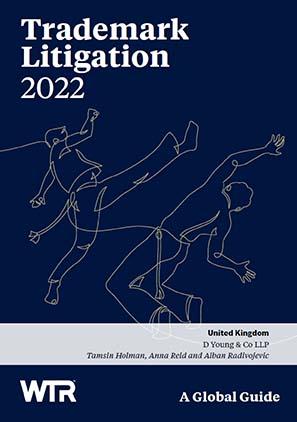Nissan v EUIPO: General Court rules that E-POWER and VDL EPOWER are not confusingly similar
In Nissan Motor Co Ltd v European Union Intellectual Property Office (EUIPO) (Case T-755/20), the General Court dismissed Nissan’s appeal and found that VDL Groep’s EU trade mark application for VDL E-POWER was not confusingly similar to Nissan’s UK and French registrations for the figurative mark E-POWER in relation to identical or similar goods.
Background
In June 2018 VDL Groep applied to register VDL E-POWER in relation to a range of goods in classes 7, 9 and 12, including “batteries for vehicles; charging stations for electric vehicles; vehicles; and electric vehicles”. Nissan filed an opposition under Article 8(1)(b) of Regulation 2017/1001, claiming that the application was confusingly similar to its UK trade mark number 3293755 and French trade mark number 4431504, both covering the figurative E-POWER mark depicted below in relation to class 9 and 12 goods, such as “batteries for land vehicles and electric vehicles and their parts and fittings”.

The opposition was initially upheld and the application rejected in its entirety; however, the First Board of Appeal of the EUIPO subsequently annulled the decision, finding that the “VDL” element differentiated the conflicting signs and was distinctive. This, given the relevant public’s high level of attention, meant there was no likelihood of confusion despite the goods being identical or similar (at least to a low degree).
Appeal to the General Court
Nissan appealed, arguing that the public would attach greater weight to the “e-power” element of the application due to its identifiable meaning, and that the Board of Appeal erred in not finding a high degree of similarity between the marks.
The General Court commented that consumers indeed break signs down into elements which have a clear meaning to them. However, since “epower” alludes to electric vehicles or the type of energy ensuring their functioning, it inherently has a low degree of distinctiveness (particularly given the mark’s minimal stylisation). “VDL”, in turn, would be perceived as an acronym with no clear meaning and an average degree of distinctiveness. For this reason, the Board of Appeal was correct in stating that “e-power” does not play an independent distinctive role within the application and does not carry more weight for the relevant public than the “VDL” element, which is the most distinctive part of the intervener’s application.
Nissan also argued that the “VDL” element lacked distinctiveness because it referred to the intervener’s company name. Rejecting this point, the General Court noted that the inclusion of a company name within a trademark does not preclude it from playing an integral role within the application.
The General Court further agreed with the Board of Appeal that, due to the addition of “VDL” into the application, the marks were only phonetically similar to an average degree and visually similar - not highly similar. However, in a further blow to Nissan, it disagreed with the contested decision, noting that the marks are not conceptually similar but only similar to a low degree. The mere presence of “e-power” in both signs, given its low distinctiveness, did not mean that there was necessarily a high degree of conceptual similarity between the two marks.
On a global assessment, the above considerations were all the more persuasive in light of the relevant public’s high level of attention, and the appeal was dismissed.
Comment
The General Court’s ruling is a useful reminder of the role company names can play within composite marks and the difficulties that may be encountered when enforcing somewhat descriptive marks. Overall, the attempt to rely on the allusive meaning of the “e-power” element to prove that it enjoys an elevated degree of distinctiveness formed an interesting argument on Nissan’s part.
This article was first published on World Trademark Review on 24 November 2021 (see www.worldtrademarkreview.com).


